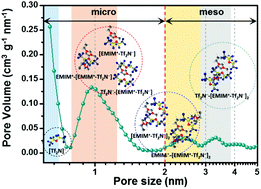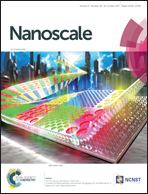Multimodal porous carbon derived from ionic liquids: correlation between pore sizes and ionic clusters†
Abstract
In this proof of concept study on the synthesis of ionic liquid (IL)-derived multimodal porous carbon using ionic clusters of different sizes as porogens, the carbonization behaviors of binary IL mixtures of 1-ethyl-3-methylimidazolium dicyanamide (EMIM-dca) and 1-ethyl-3-methylimidazolium bis(trifluoromethylsulfonyl)imide (EMIM-Tf2N) were systematically investigated to demonstrate the formation of multimodal porous carbons with hierarchical structures originating from the ionic cluster porogens. The multimodal porous structures of the resulting IL-derived porous carbons were characterized based on the quenched solid density functional theory, and the role of the ionic clusters as porogens is discussed. From the viewpoint of green and sustainable chemistry, the IL-based synthesis using ionic clusters as porogens is a simple, effective, and sustainable technique for synthesizing multimodal porous carbons with hierarchical structures. To the best of our knowledge, this is the first study demonstrating that a multimodal porous structure of IL-derived porous carbons could be systematically manipulated with the aid of ionic clusters of different sizes as porogens.



 Please wait while we load your content...
Please wait while we load your content...